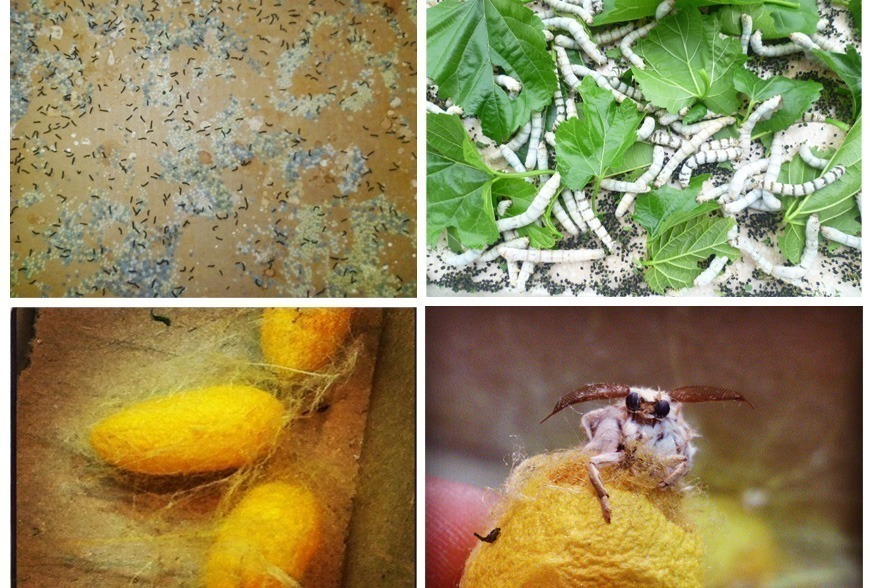THE SILKWORMS
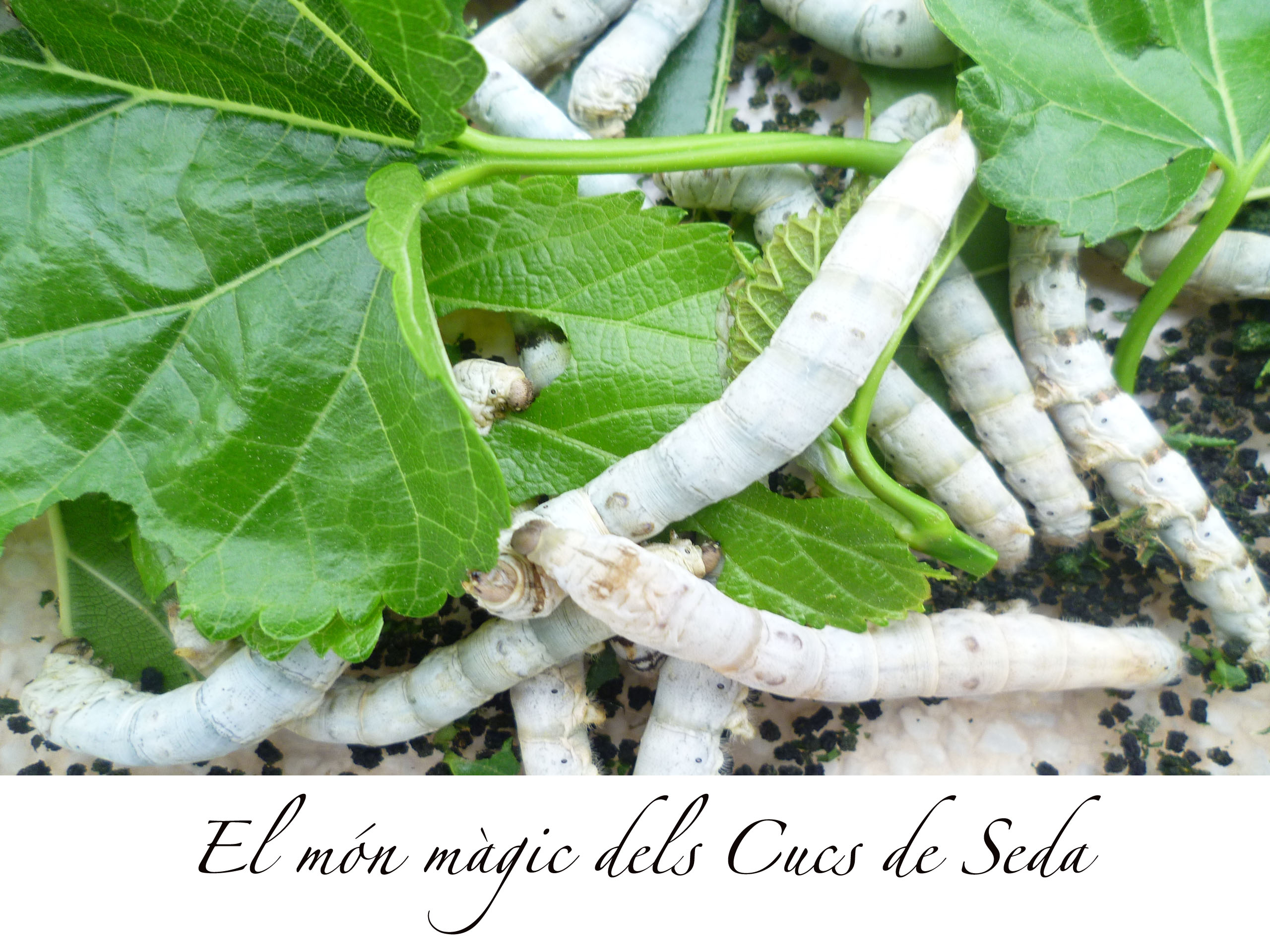
Bombix mori is the scientific term for the silkworm, an insect native to northern Asia.
Breeding of this species began in China around 2500 BC to obtain the thread from its silk cocoon, a fibre used to weave high quality and extraordinarily strong fabrics.
Trade routes were created between East and West. The Silk Road began in the 2nd century BC and served to transmit knowledge and information between East and West for a long time. Many products travelled along these routes, silk being one of the most precious.
There are several legends about the discovery of silk and the most extensive one explains that the emperor Huang Ti asked his wife, the empress Xi Ling Shi, to investigate what was happening to his mulberry tree, whose leaves were mysteriously disappearing. All in all, he discovered a few small buds. He picked one up while sipping his hot tea and it inadvertently slipped out of his hands and fell into the cup. When he pulled it out, he started to parade and got a very long thread.
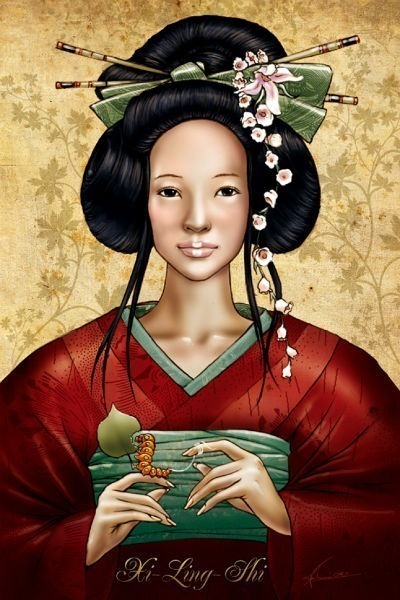
The secret of silk manufacture was not revealed for the next two centuries and there was an imperial law that ordered anyone who revealed it to be tortured to death.
On the death of the empress, temples and altars were built in her honour and named after the “Goddess of Silkworms”.

Map of the Old Silk Road
In the West they discovered the secret at the end of the Middle Ages via Constantinople when, according to another legend, Emperor Justinian sent two monks to discover the secret. Although it is possible that the secret may have spread to the rest of the world from India, where it was cultivated as early as 300 AD.
In our time, the silkworm has become the only insect we have cared for as a pet.

Not so much nowadays, but both our generation and our parents’ generation have experienced in many houses the experience of having a shoebox with worms and drilling the mulberry trees to get their food.
The silkworm undergoes a complete metamorphosis. And it is very interesting and pedagogical to be able to experience the whole process.
Its development consists of four distinct stages: egg, caterpillar or larva, chrysalis and imago or butterfly.
First phase: egg
The newly laid eggs are soft and yellow. They slowly turn a darker colour until they darken. If they remain yellow, they are not fertilised and the worm will not hatch the following spring. It is important to keep the egg box in a place where it is not hot. You can also cut the box into small pieces and store it in the fridge. I explain this because worms are often born earlier than mulberry trees do not emerge. If we don’t have food, they will die. To the refrigerator, we delay the hatching or we adapt it at the exit of the leaf. When we see that we can feed them, we take out the eggs and in about 15 days we will have the worms.

Second phase: caterpillar
Just hatched, the caterpillars are dark and about 2mm long. Their first food is the piece of egg that they have to eat to be able to go outside. Afterwards, we will have to feed them with the tender mulberry leaves. Tender yes, wet or damp no. Water is destructive to worms.
During this phase, which lasts about six weeks, they will moult several times, so if you see them planted, with their heads held high and immobile, it is best not to hinder the process. The worm will renew its organs, grow and change colour. They are born dark and some will be white, some grey and some striped with black and white.

After about a month they are about 7-8 cm long. It is important not to starve them, otherwise they will grow more slowly. Ants are the main enemy. You can clean the box often if you see a lot of droppings accumulating, as they can also carry infections that can cause them to die.
When you see that it wants to start cocooning, move it to another box. You will see that he looks for a corner and starts to pull out some silk to make room for himself and retire for the new stage. It is a very interesting moment where we will see how carefully he works to make the silk cocoon. It is very magical!
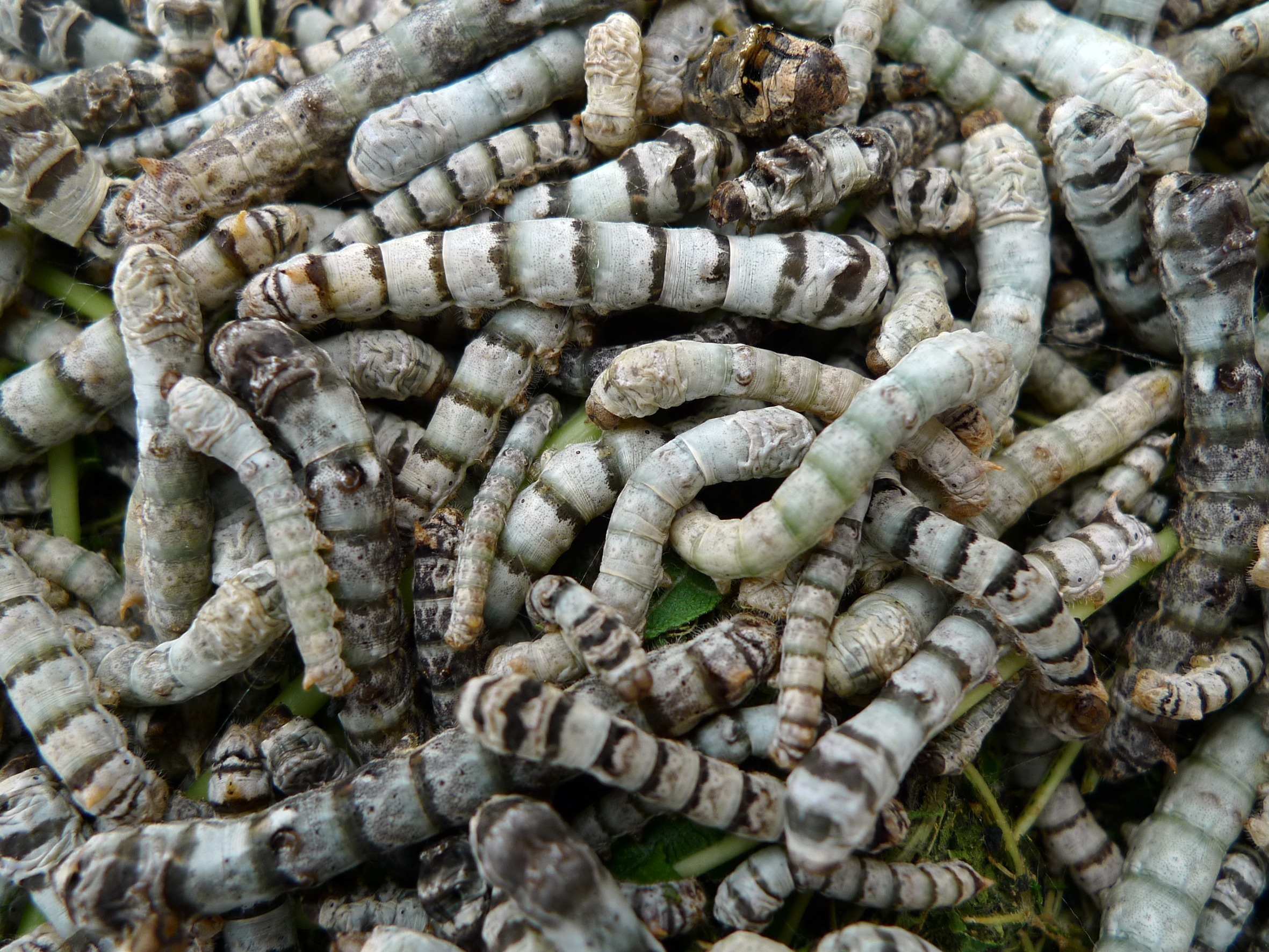
Third stage: chrysalis
Here we have the cocoon and the worm becomes a kind of mummy, pupa or chrysalis. It will slowly transform into a butterfly inside the cocoon.
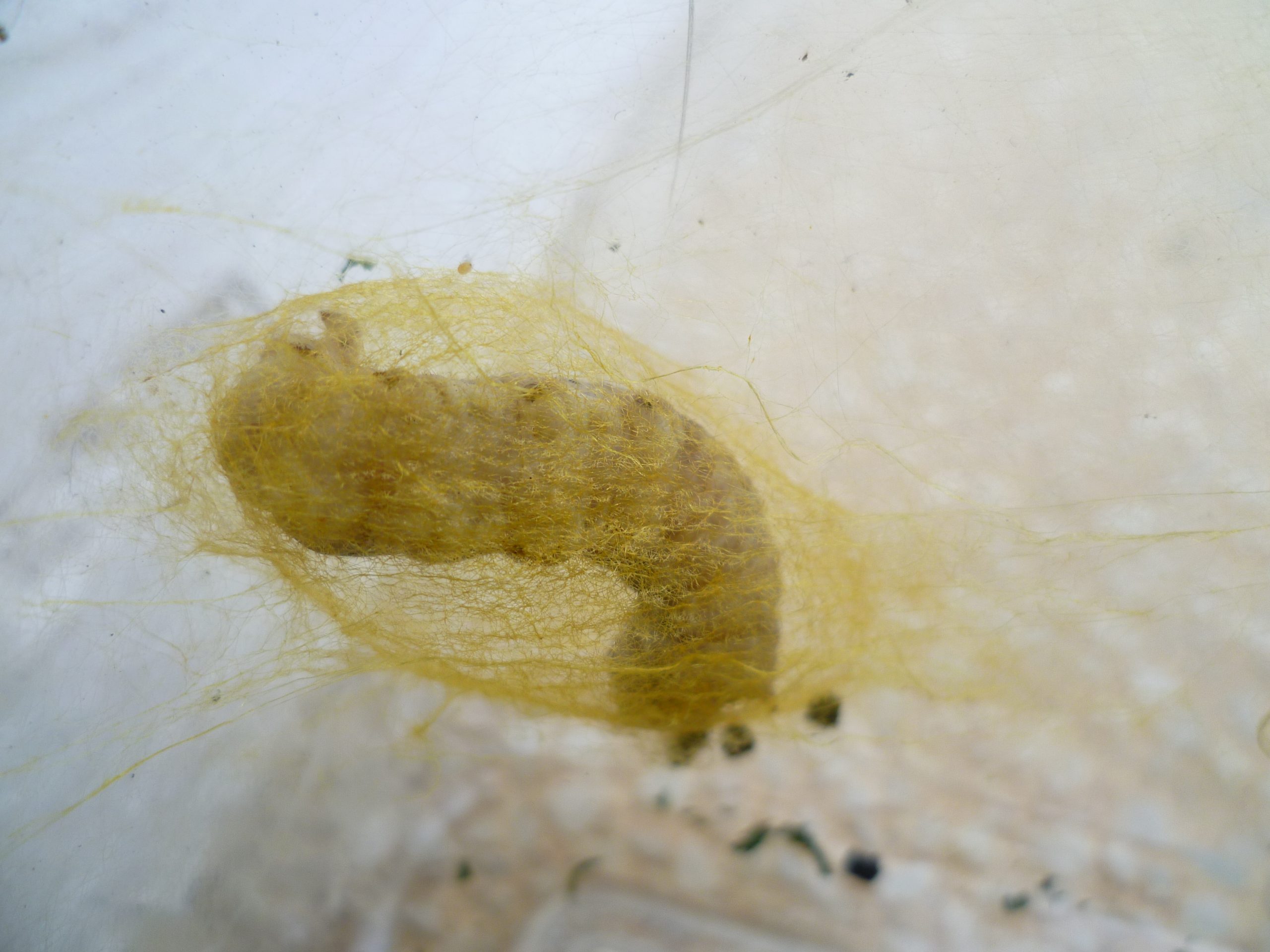
Fourth phase: butterfly
After two or three weeks, the butterfly has to make a great effort to get out, as the thread is very resistant. It is aided by a special liquid that allows it to disengage from the cocoon. It is another magical moment. We will see below how the butterflies are quickly mated. They hatch, mate, lay eggs and die. This is its function. This phase lasts about a week. Remember to save the eggs until next spring to revive the process.

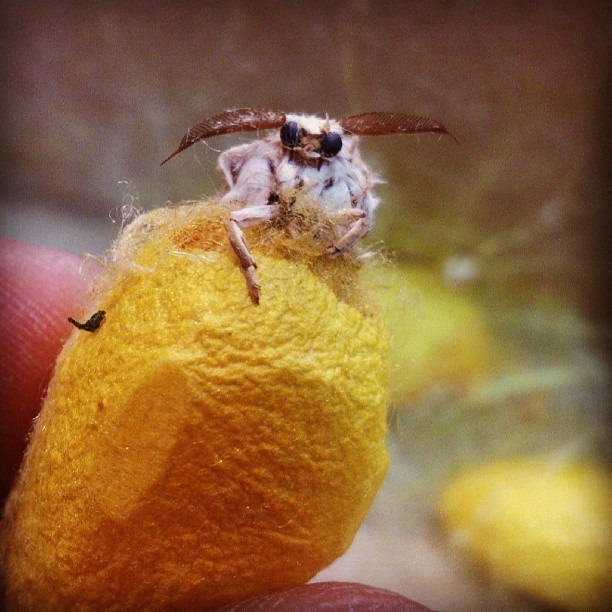

Do you want to see what we do with the silk cocoons?
Some of them we send to spinners who spin them, weave them and give them a new life.
Others we use them to create….
Mila Kuzmenko Jewellery
And if you want silkworms you can write to us at artenseda@annaalbert.com or contact us at tel. 619719894

